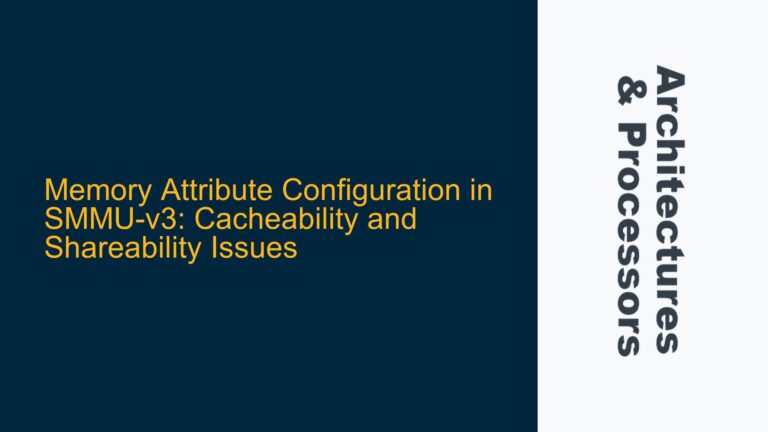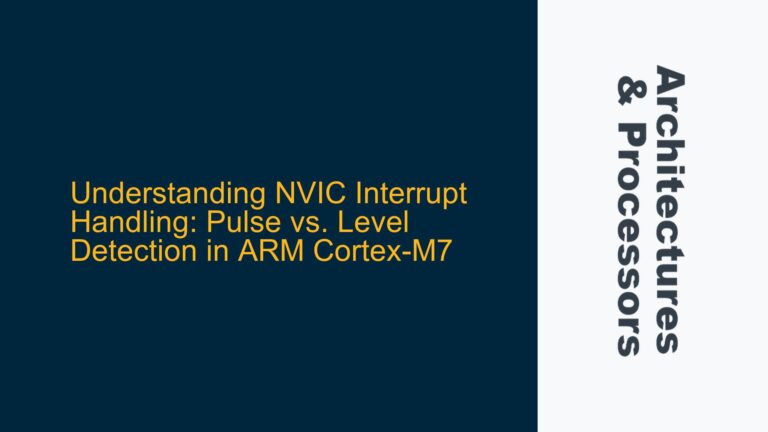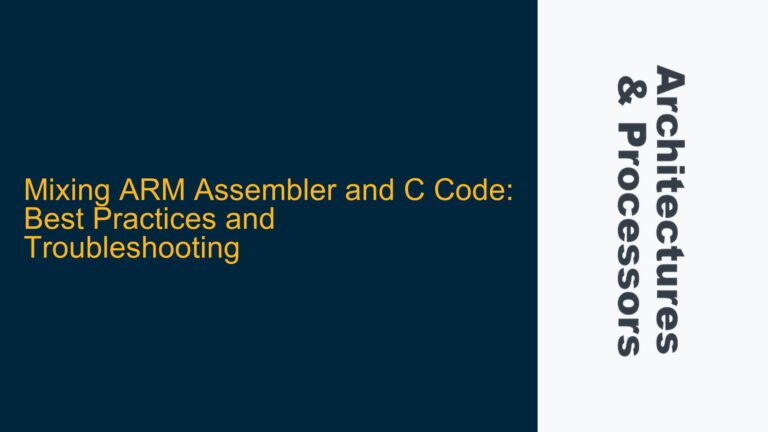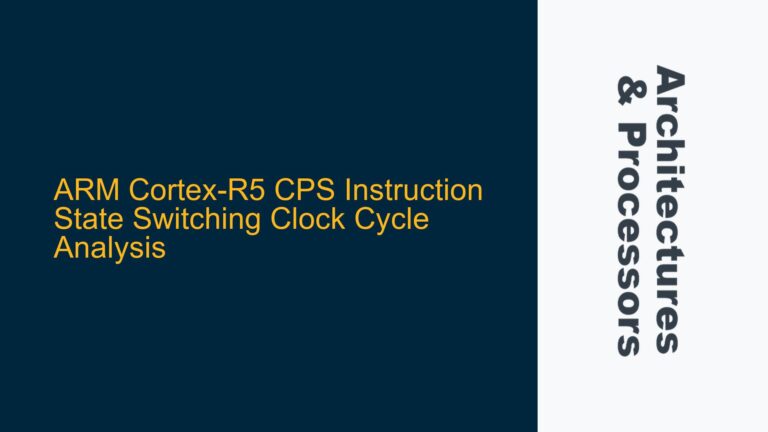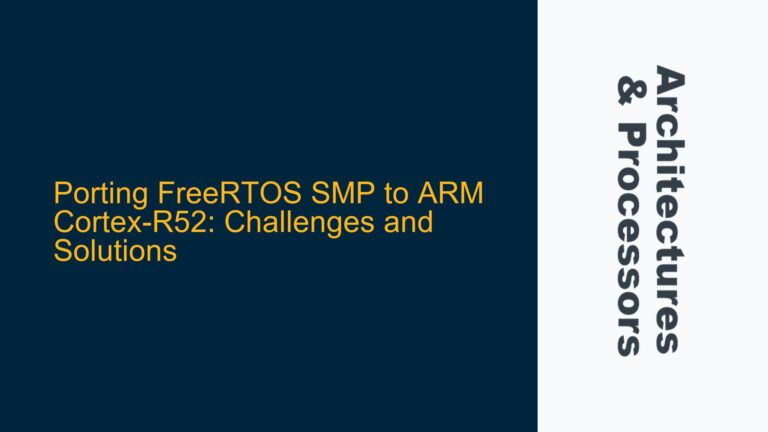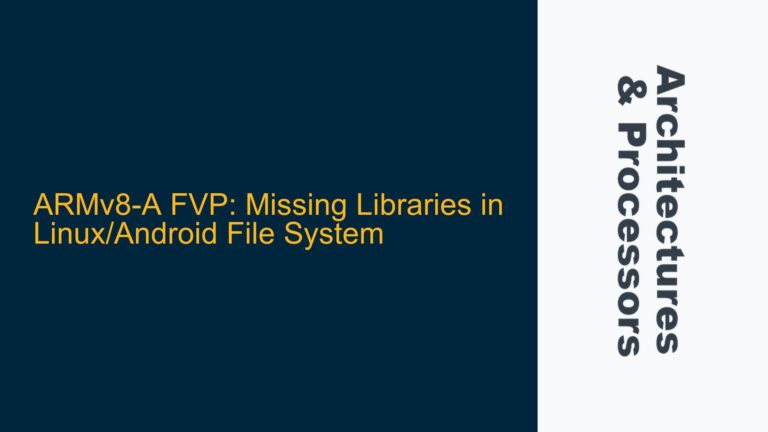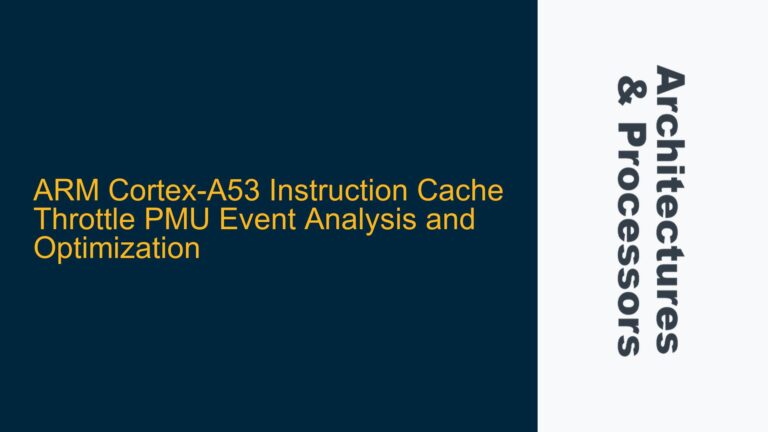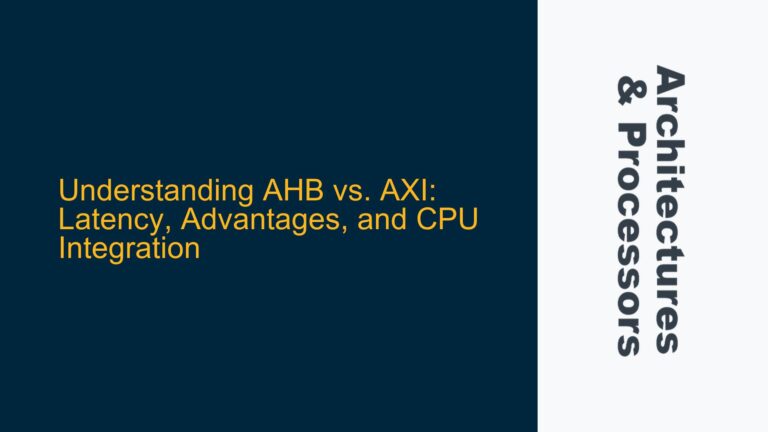Memory Attribute Configuration in SMMU-v3: Cacheability and Shareability Issues
SMMU-v3 Memory Attribute Configuration and Cache Coherency Challenges The System Memory Management Unit version 3 (SMMU-v3) is a critical component in modern ARM-based systems, particularly in hypervisor environments where it manages memory translations and access permissions for devices. One of the most intricate aspects of SMMU-v3 configuration is the setup of memory attributes, specifically cacheability…
